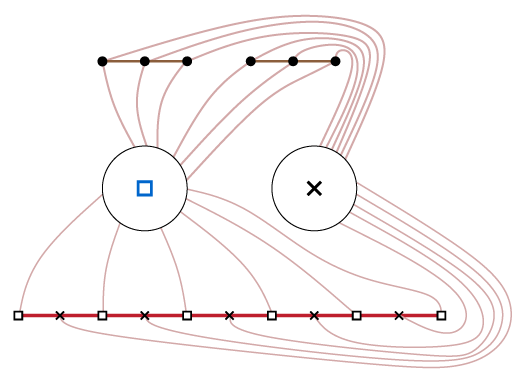The Tron motorcycle game, combinatorialized
What I'm reading this evening: Tillmann Miltzow's new arXiv preprint, Tron, a combinatorial Game on abstract Graphs.
It's about an abstract game (previously studied as far back as 1990, and modeled after the same one that inspired motorcycle graphs!) in which two players move along paths in a graph until one player is forced to move into a previously-used vertex and crashes. As Miltzow describes in an early example, it's not completely trivial even when the graph consists of two equal paths: if the first player moves near the middle of one path, the second player can move near the end of the other path, and get twice as many moves, whereas if the first player moves near the end of one path, the second player can play in the same path and cut the first player off. So the second player wins, and moreover the golden ratio magically shows up as the winning ratio (the ratio of the number of free moves of the second player to the number of free moves of the first, if both play optimally).
But what really caught my attention in the paper was the style of graph drawing it uses. The paper includes illustrations of several graph-theoretic gadgets for completeness proofs, which it calls visages, and it draws them in such a way that they look like faces. At least until the last one, which has six eyes...

Comments:
2011-10-17T04:36:28Z
that game was called SNAKE right? and it goes back further than 1990!
2011-10-17T04:56:52Z
You're right, it's very similar and much older. http://en.wikipedia.org/wiki/Snake_(video_game)
Wikipedia tells me that another similar predecessor, Blockade, was an inspiration for the Tron light cycle game.
2011-10-17T14:44:31Z
Two eyes, and a mouth.